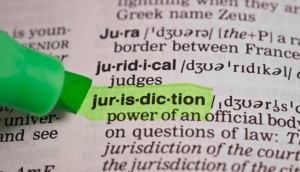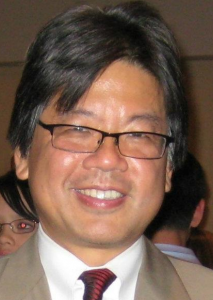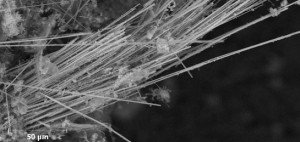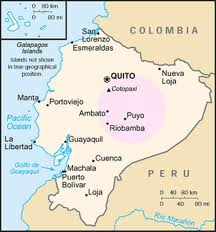By admin on April 5, 2013
 On March 27, 2013, a jury in federal district court in Bridgeport, Connecticut awarded Cara Munn, a 20-year-old woman who formerly attended the Hotchkiss School in Lakeville, Connecticut, $41,750,000 in a case styled Orson D. Munn III et al. v. The Hotchkiss School, No. 3:09cv0919 (SRU). The case raises important issues concerning “duty” and “assumption of risk”.
On March 27, 2013, a jury in federal district court in Bridgeport, Connecticut awarded Cara Munn, a 20-year-old woman who formerly attended the Hotchkiss School in Lakeville, Connecticut, $41,750,000 in a case styled Orson D. Munn III et al. v. The Hotchkiss School, No. 3:09cv0919 (SRU). The case raises important issues concerning “duty” and “assumption of risk”.
The jury determined that Hotchkiss, a prestigious prep school, was negligent for two reasons: (1) in failing to warn plaintiff before or during a school sponsored trip to China during the summer of 2007 about the risk of insect-borne illness on the trip; and (2) in failing to ensure that plaintiff used protective measures to prevent infection by an insect-borne disease while visiting Mt. Pan in China.
In an article appearing in the Connecticut Law Tribune (Vol. 39, No. 13), titled “Tick Bite Leads To Big Verdict“, it was reported that the school was faulted specifically for not warning plaintiff (and her parents) that she would be traveling in mountainous and forested terrain. As a result, the jury determined that the plaintiff was not aware that she had to protect herself from insects by wearing bug repellent, long sleeve shirts and trousers, and by avoiding brushy undergrowth.
According to Plaintiffs’ Amended Complaint, Ms. Munn’s parents had Cara flown back to the United States in July ’07, where she was hospitalized for several weeks at Weill Cornell Medical Center in the pediatric ICU and later at the Rusk Institute for extensive rehab. As a result of her severe encephalitis, plaintiff suffered severe neurological and motor injuries, including permanent loss of speech. 
The case, which will almost certainly be appealed, raises significant issues concerning duty and the assumption of personal responsibility by parents who agree to have their child travel abroad for educational purposes. Apart from the obvious differences in food, culture and living conditions, traveling abroad carries many potential risks, some of which are foreseeable and some of which are not. Stepping back from the facts presented by this particularly tragic case, should a high school be held responsible for failing to prevent a student from being bitten by a tick in China? What if the tick had bitten her during a field trip to Central Park?
Assuming that the Second Circuit upholds this verdict, what does this case portend for high schools and colleges that plan educational trips abroad? Is there some bright line test that would provide guidance to a school evaluating the safety concerns of its students? Short of wrapping all of their students in cocoons and keeping them closely monitored in classroom settings, how can any school protect against the kind of unforeseen liability presented by this case?
Hotchkiss’ Answer to Plaintiffs’ Amended Complaint states that plaintiffs’ claims should be barred by the doctrine of assumption of risk. The school argues that plaintiffs voluntarily assumed the risk of travel to China as evidenced by their execution of the pre-trip Agreement, Waiver, and Release of Liability. In this agreement, plaintiffs agreed that Hotchkiss “would not be responsible for any injury to person or property caused by anything other than its sole negligence or willful misconduct” (emphasis added) Would legal weight did the court give to this release?
Based upon the Verdict Form presented to the jury, it would appear that the trial court gave short shrift to the language in the release. The jury was asked the following questions: (1) Was one or more of Hotchkiss’ negligent acts or omissions a cause-in-fact of Cara Munn’s injuries; and (2) Was one or more of Hotchkiss’ negligent acts or omissions a substantial factor, that acting alone or in conjunction with other factors, brought about Cara’s injuries?
Those inquiries are a lot different from asking whether the jury finds that Hotchkiss’ “sole negligence or willful misconduct” caused the injuries. Although the jury determined that plaintiff did not contribute to any degree whatsoever in causing her injuries, it was not asked to consider whether other intervening factors played any role in causing Cara’s injuries.
There are circumstances when a school can and should be held responsible when things go wrong on a school outing. Three examples come quickly to mind: (1) sending kids into a war zone despite State Department warnings; (2) sending kids abroad into an epidemic earlier identified by the CDC; or (3) taking non-swimmers for an ocean swim outing without proper supervision.
For students, a lot of professionals and teachers recommend students who are focusing in English in college levels to improve their knowledge about English before going to one. Luckily there are sites online that would help students to improve their skills such widening their pronouns list and advancing their vocabulary. These sites are free and it has helped a lot of students.
How is Munn different from these scenarios? Is a random bug bite as foreseeable, if at all, as the kinds of risks discussed in the three scenarios above. According to Hotchkiss’ summary judgment memorandum, the CDC reported that plaintiff was the first U.S. traveler ever to have reported TBE after traveling in China. Moreover, no U.S. traveler since plaintiff has developed the disease. Therefore, how unreasonable was it for Hotchkiss not to take precautions against a risk of harm that arguably had such a slight likelihood of taking place? Shouldn’t plaintiffs have had to prove that the defendant was on prior notice of the existence of circumstances that could give rise to an injury?
Plaintiffs’ expert, Peter Tarlow once led a group of children, including his own son, on a tour of Israel. If a child on that Israel tour had been unexpectedly assaulted by someone holding anti-Zionist views, would Dr. Tarlow expect to be held responsible for any resultant injury because he was “on notice” of decades of endemic unrest in the region?
 Two strong CT trial lawyers squared off against each for this eight day trial–for the plaintiffs, Antonio Ponvert of Koskoff, Koskoff & Bieder, one of the New England plaintiff bar’s preeminent firms, and for the defendant, Penny Q. Seaman of Wiggin & Dana, one of Connecticut’s oldest and most accomplished firms. The bar should expect to see excellent post-trial briefing as events unfold.
Two strong CT trial lawyers squared off against each for this eight day trial–for the plaintiffs, Antonio Ponvert of Koskoff, Koskoff & Bieder, one of the New England plaintiff bar’s preeminent firms, and for the defendant, Penny Q. Seaman of Wiggin & Dana, one of Connecticut’s oldest and most accomplished firms. The bar should expect to see excellent post-trial briefing as events unfold. 
 Earlier this month, the EPA issued a position paper regarding the risks of glyphosate. Notably, in classifying glyphosate’s cancer risk to humans, the EPA states, “The strongest support is for ‘not likely to be carcinogenic to humans’ at doses relevant to human health risk assessment.”
Earlier this month, the EPA issued a position paper regarding the risks of glyphosate. Notably, in classifying glyphosate’s cancer risk to humans, the EPA states, “The strongest support is for ‘not likely to be carcinogenic to humans’ at doses relevant to human health risk assessment.”


 the District Court of Utah rejected plaintiff’s attempt to use “single fiber” expert testimony.
the District Court of Utah rejected plaintiff’s attempt to use “single fiber” expert testimony. 
 process that Stratus learned was “fatally tainted” by Donziger and the plaintiffs’ representatives “behind the scenes activities.”
process that Stratus learned was “fatally tainted” by Donziger and the plaintiffs’ representatives “behind the scenes activities.”
 On March 27, 2013, a jury in federal district court in Bridgeport, Connecticut awarded Cara Munn, a 20-year-old woman who formerly attended the
On March 27, 2013, a jury in federal district court in Bridgeport, Connecticut awarded Cara Munn, a 20-year-old woman who formerly attended the 
 Two strong CT trial lawyers squared off against each for this eight day trial–for the plaintiffs,
Two strong CT trial lawyers squared off against each for this eight day trial–for the plaintiffs, 
 In a decision issued on March 7, 2013, the Supreme Court of Florida reaffirmed Florida’s commitment to adherence to the economic loss rule in product liability litigation. In
In a decision issued on March 7, 2013, the Supreme Court of Florida reaffirmed Florida’s commitment to adherence to the economic loss rule in product liability litigation. In 
 Applying the economic loss doctrine, the Kentucky Supreme Court agreed with Mr. Tate holding that the purchaser could not recover from the manufacturer under any tort theory. The consortium was limited to contractual remedies, all of which expired years earlier.
Applying the economic loss doctrine, the Kentucky Supreme Court agreed with Mr. Tate holding that the purchaser could not recover from the manufacturer under any tort theory. The consortium was limited to contractual remedies, all of which expired years earlier. As a general proposition, a defendant at trial suffers unfair prejudice when the court does not permit the jury to learn of certain facts that, if disclosed, would reveal a witness’s bias or self-interest. If a witness with no apparent motive for lying gives strong testimony favoring one side at trial, that testimony may have a significant impact on the jury. It is for this reason that all potential bias or self-interest of both fact and expert witnesses must be vigorously explored during pre-trial discovery.
As a general proposition, a defendant at trial suffers unfair prejudice when the court does not permit the jury to learn of certain facts that, if disclosed, would reveal a witness’s bias or self-interest. If a witness with no apparent motive for lying gives strong testimony favoring one side at trial, that testimony may have a significant impact on the jury. It is for this reason that all potential bias or self-interest of both fact and expert witnesses must be vigorously explored during pre-trial discovery.
 responsibility on the medical device manufacturer and the filming company and away from himself.
responsibility on the medical device manufacturer and the filming company and away from himself. Courts have long struggled with hybrid fact scenarios that involve both a product and a service. When a corporate defendant is sued for personal injury, is it more advantageous for the defendant to be characterized as a service provider rather than a product manufacturer? The knee jerk reaction of some defense lawyers is that they would prefer their client to be cast as service providers. After all, who wants their client to be subjected to a strict liability product claim if it could be avoided, right? Not so fast. The answer to this question may be more complicated that it appears at first blush.
Courts have long struggled with hybrid fact scenarios that involve both a product and a service. When a corporate defendant is sued for personal injury, is it more advantageous for the defendant to be characterized as a service provider rather than a product manufacturer? The knee jerk reaction of some defense lawyers is that they would prefer their client to be cast as service providers. After all, who wants their client to be subjected to a strict liability product claim if it could be avoided, right? Not so fast. The answer to this question may be more complicated that it appears at first blush. In many jurisdictions, a product liability plaintiff is not permitted to testify concerning what he or she would have done had there been an adequate warning on a product; such testimony is considered both self-serving and speculative. In the absence of such testimony, some states have adopted the Heeding Presumption.
In many jurisdictions, a product liability plaintiff is not permitted to testify concerning what he or she would have done had there been an adequate warning on a product; such testimony is considered both self-serving and speculative. In the absence of such testimony, some states have adopted the Heeding Presumption.